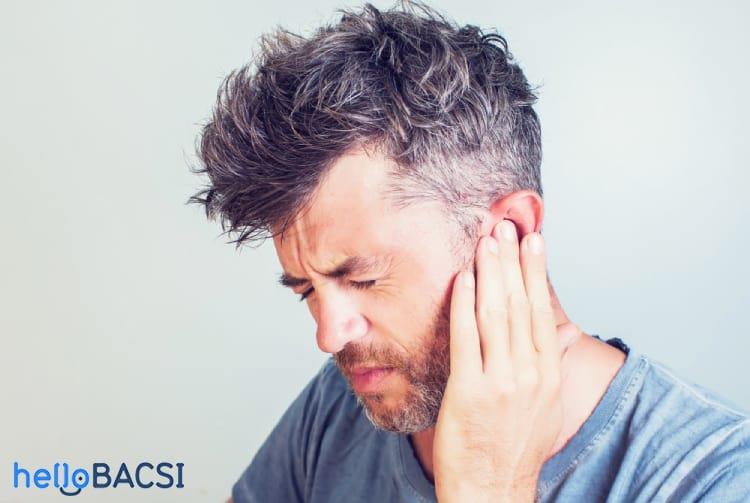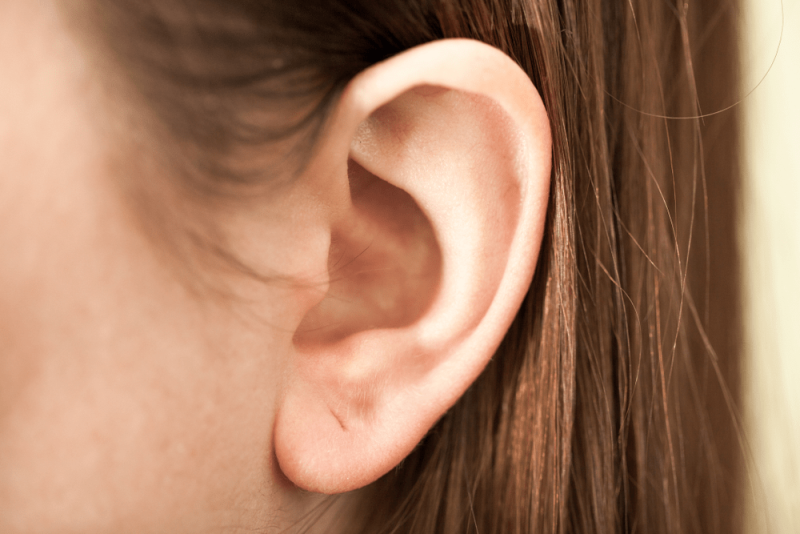Ear cholesteatoma: Causes, symptoms and diagnosis

Cholesteatoma is a special type of lesion, which usually occurs when the middle ear is chronically inflamed. They form clumps and grow in size over time, destroying ear bones and increasing the risk of permanent hearing loss.
What is Cholesteatoma?
A cholesteatoma is an abnormal growth of the skin (not a cancerous tumor) that usually forms in the middle ear, behind the eardrum. Cholesteatoma can be a birth defect. But most often it occurs as a result of repeated middle ear infections.
A cholesteatoma usually develops as a cyst, which rolls into sacs, shedding old layers of skin. As these dead skin cells accumulate, the cholesteatoma gradually increases in size and destroys the middle ear bone. This can affect hearing, balance and function of the facial muscles.

Causes of cholesteatoma
Besides chronic middle ear infections, poor functioning of the eustachian tube (the tube that runs from the back of the nose to the middle of the ear) is another cause of cholesteatoma. The eustachian tube allows air to flow through the ear and equalizes ear pressure. It may perform poorly due to the following issues:
- Chronic ear infections
- Sinusitis
- Cold
- Allergy
If the eustachian tube is not working correctly, a localized vacuum can occur in your middle ear. This causes part of the eardrum to be pulled into the middle ear, creating a cyst, which in turn develops into a cholesteatoma. Over time, a cholesteatoma grows larger with old skin cells, fluid, and other waste products.
Cholesteatoma in children
Cases of infants with cholesteatoma are very rare. This is considered a birth defect. Congenital cholesteatoma can form in the middle ear or other areas of the ear.
In cases where a child has multiple ear infections in his or her life, cholesteatoma can develop at an early age.

Symptoms of cholesteatoma
Symptoms associated with cholesteatoma are usually mild in onset. They become more serious as the cyst grows larger and begins to cause other problems.
Initially, cholesteatoma can cause a foul-smelling discharge from the ear. As the cyst grows, it begins to create pressure in your ear. This can cause some discomfort. You may also feel pain in or behind your ear. Even the pressure of a growing cholesteatoma can cause hearing loss.
Therefore, if you notice any unusual symptoms, you need to see a doctor immediately. If the cholesteatoma continues to grow unchecked, it can lead to dizziness, paralysis of the facial muscles, and permanent hearing loss.
Potential complications of cholesteatoma
When left untreated, cholesteatoma will grow larger and cause complications that range from mild to extremely serious.
Dead skin cells accumulate in the ears creating an ideal environment for bacteria and fungi to thrive. This means that the cholesteatoma can become infected, causing inflammation and ongoing drainage.
Over time, cholesteatoma can also destroy surrounding bone. It can damage the eardrum, the bone inside the ear, the bone near the brain, and the facial nerve. Permanent hearing loss can occur if the bones in the ear are destroyed.
The cyst can even spread to the face if it continues to grow. Other potential complications include:
- Chronic ear infections
- Swollen inner ear
- Facial muscle paralysis
- Meningitis
- Brain abscess, pus in the brain
Methods to diagnose cholesteatoma
To determine if you have a cholesteatoma, your doctor will examine the inside of your ear using an otoscope. This device allows doctors to recognize signs of cysts growing. Specifically, they will look and look for visible skin cells or large masses of blood vessels in your ear.
Alternatively, you may also be ordered to have a CT scan if there are no obvious signs of cholesteatoma. Usually, a CT scan will be ordered when you have certain symptoms, such as dizziness and facial weakness. A CT scan allows your doctor to see inside your ears and skull. This helps them better visualize the cyst, or rule out other conditions with similar manifestations.
How to treat cholesteatoma?
In general, the only way to treat a cholesteatoma is to surgically remove it. The cyst must be removed to prevent possible complications in case it grows larger.
Once a cholesteatoma has been diagnosed, your doctor will prescribe you antibiotics, ear drops, and instructions for cleaning the ear. This is an option to treat infected cysts, reduce inflammation and discharge. The doctor can then conduct an analysis of the growth characteristics of the cyst and plan for surgical removal.
According to Healthline, in most cases you'll have an outpatient surgery, which means you don't have to stay in the hospital after the surgery. A stay in the hospital is only necessary if the cyst is very large or you have a serious infection. For ear cholesteatoma, you will have 2 stages of surgery. The first stage is to remove the cyst, the next stage is to surgically reconstruct the damage to the inner ear and make sure the cholesteatoma has been completely removed.
After the cholesteatoma is removed, you will need follow-up visits to evaluate the outcome of the surgery and make sure the cyst has not returned. If a cholesteatoma breaks the bones in your ear, you'll need a second surgery to correct them.
After surgery, some patients may experience temporary dizziness or abnormal taste. These side effects almost always go away on their own within a few days.
How to prevent ear infection cholesteatoma
You cannot prevent congenital cholesteatoma in children, but it should be noted to quickly identify and treat the disease in time for the baby.
For non-birth defects, you can prevent cholesteatoma by treating ear infections quickly and thoroughly.
Besides, there are a few notes you need to know to prevent disease more effectively, including:
- Build a healthy and balanced diet. Eat plenty of fruits and vegetables to supplement vitamins and minerals for the body.
- Always keep your ears dry, especially after bathing, washing your hair, or swimming.
- Be careful when removing earwax. Clean the earwax removal tool clean and properly.
- Limit exposure to dusty, highly polluted environments.
- Thoroughly treat respiratory diseases, flu, other ear, nose and throat diseases.
